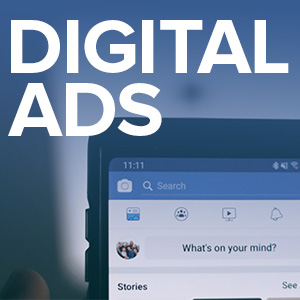On any given day, we usually lose track of how many digital ads we’ve seen before we even get to our morning coffee. We typically don’t crack open the laptop before then, which gives you a pretty good idea of how omnipresent digital ads are. But just because they’re everywhere doesn’t make them any less effective. Actually, it probably tells you exactly why they’re everywhere.
Enrollment and athletic departments have been doing a bunch of interesting things with digital ads (not to mention modern nonprofits like charity: water), but we don’t see too many fundraising teams getting in on the fun. Which is why we really enjoyed this presentation from Stony Brook University at DRIVE/.
As a part of their experimentation with digital ads, Stony Brook found that they converted 59 donors for an ad-attributed revenue of almost $22,000. We’d say that’s a pretty good return on the $1,000 they spent on the ads themselves.
To us, the question is less why fundraisers should use digital ads, but how they can go about it. Stony Brook isolated three specific areas digital ads can make a difference plus a handful of ways to get started.
Where Digital Ads Can Help
Fundraising
Cart abandonment doesn’t only happen when you realize you don’t exactly need a 12th pair of sneakers just before checking out. It might be a phrase most commonly associated with retail, but fundraising has a cart, too: The giving page.
And just like any online shopping cart, a shocking number of people stall out there. 83% of them in the nonprofit industry, according to the presentation.
By including a pixel on the giving page, you can retarget people who came THISSSS close to making a gift. They might only need a little nudge or two from an ad to convert, and you can create one that speaks specifically to the people who are just about ready to give.
Addressing cart abandonment is only one example of how digital ads can help you bring in actual dollars. You can extend the life of your direct mail, email outreach or even phonathon with an additional touchpoint that retargets and reminds people online with a digital ad.
Event Promotion
You’ll do almost anything to get a good turnout at your event, so why not try digital ads? You can target people who went to your school and live or work within a certain radius of the event or, if the occasion relates to a certain topic, those who have shown previous interest in the subject matter.
Education and Engagement
You gotta stay relevant. If someone forgets about you, they’ll never give. Ads don’t need to ask for money or attendance. They can exist simply to inform and keep your organization top of mind for the next time an ask comes up. Stony Brook ran digital ads highlighting a prize won by their mathematics faculty targeted at math and physics donors and alums. Even though the content of the ad isn’t specifically to ask for gifts, it raised $3,900 all the same. People love awards, apparently.
How to Get Started
The numbers and results are great, but how do you get started? Stony Brook offered some great pointers here, too.
Start Small
We couldn’t agree with this more. Digital ads aren’t rocket science, but they can feel a little daunting if you don’t have any experience. Pick one platform (like Facebook), and start experimenting. Luckily, Facebook ads are incredibly cheap, so you can run plenty of tests for just a few bucks.
Don’t Go It Alone
That said, don’t go completely rogue just because it’s a test. Run them in conjunction with other initiatives you’ve already got going on, whether that’s Homecoming, a year-end push or your most recent piece of direct mail.
Segmentation Is the Name of the Game
The more targeted your ads, the better. They’ll speak more directly to the group who sees them and, as a result, resonate more, which should lead to more engagement and, ultimately, donations. Since you can set up the groups who see your ads any way you want, you have a TON of control here, which you can use to your advantage.
We love segmentation. Want to learn more about how you can segment your data without driving yourself crazy? Check this out.
Test, Test Then Test Some More
Stony Brook dives into how they set up controlled trials (which we highly encourage reading) and we’d echo that strategy. Even if you’re starting small, you’ll want to know exactly what kind of difference your ads made, which means you’ll need a control to compare against. It will allow you to directly measure your return on investment, which will then help you scale up your efforts as you get more comfortable.
